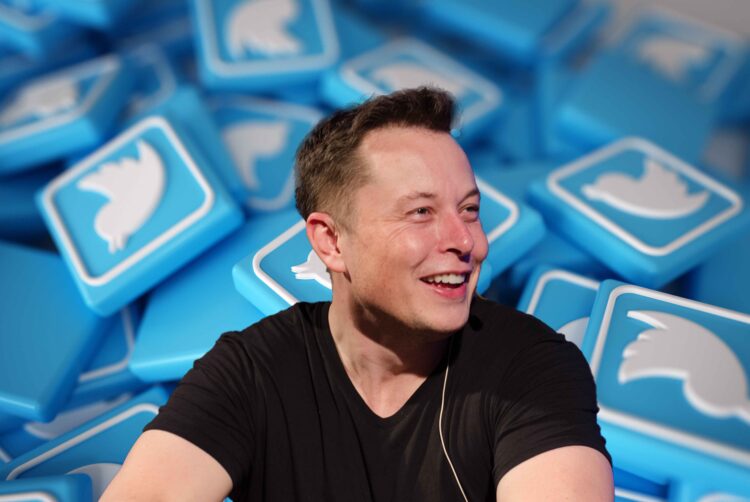What will Twitter look like under Musk and how will it impact brands?

Opinion
Elon Musk’s belief in freedom of speech and self-promotion over a traditional advertising model and content restrictions could be a double-edged sword.
Elon Musk is well known for his ability to wisecrack about the most serious topics – see his comments on putting cocaine back in Coca Cola.
We will see in the coming days just how serious Musk can be, too. His recent $44bn Twitter takeover –which has been thrown into disarray after he begun seeking legal advice over the true number of ‘bots’ on the platform, has significant implications for brands.
Twitter is crying out for creative updates if it is to maintain pace with the likes of TikTok and Instagram – and Musk’s investment could be the catalyst for change.
But any hope for Twitter’s future must be tempered with a degree of caution. Musk’s firm belief in free speech could be a double-edged sword.
At a recent conference, he offered insight into what a Muskified Twitter will look like, saying: “If the citizens want something banned, then pass a law to do so, otherwise it should be allowed” – as well as announcing he would be in favour of unbanning Donald Trump from the platform.
Musk envisions Twitter as a more open platform where individuals can air whatever views they might have, regardless of whether or not it offends the next person.
He doesn’t want to drastically change everyday users’ experiences. But the news that he is contemplating charging commercial and government users a nominal fee is sending waves across ad-land.
So what will Twitter look like under a Musk regime and how will it impact brands?
Freedom – but at what cost?
Twitter is the world’s town square and it is noisy. Its 246 million global monthly active users need no encouragement to make their voices heard.
Things are set to become significantly noisier. The platform, free of regulations and restrictions, is likely to become more divisive than ever before.
Users will be empowered to voice contentious public opinions without fear of repercussions.
And whilst this is “Christmas come early” for those that deplore censorship of any kind, brands will find themselves in a tricky spot trying to navigate this new Twitter landscape.
Familiar pitfalls will need to be navigated, like unsafe content, misinformation and fake news.
Musk’s attempts to give users total freedom carries its own risks. Content moderation in a world of no sanctions will be virtually impossible.
His opinion that “permanent bans should be extremely rare” will give figures such as Trump a platform with free reign to rant as they see fit.
Removing Twitter’s filter goes against broader societal trends.
The digital world is under intense scrutiny, with the UK and EU introducing legislation such as the Online Safety Bill and Digital Services Act to curb the amount of harmful content on the internet.
Musk’s plans to transform Twitter do not involve restraining User Generated Content (UGC), therefore the advertising options look set to drastically change.
Switching ad models
Twitter has been crying out for a new ad model for some time.
The platform’s most glaring flaw is its lack of creativity. It is not sexy from an advertising perspective, and whilst it has been lauded for its targeting capabilities, they have not helped it keep pace with the likes of TikTok and Instagram.
Twitter does not go beyond tweets and this is a problem.
Elon does not place much value in traditional advertising, preferring to adopt the role of a maverick and leveraging his own personal brand to promote his other companies, rather than using traditional advertising.
Musk’s personal flock of 80m Twitter followers provides him with a platform to develop his own brand.
Advertising, in his eyes, is not worth the financial investment when he can achieve the same results through self-promotion. So Twitter’s existing ad model is definitely about to change with the new boss in town.
Introducing a subscription model for businesses makes logical sense, as they have been capitalising on Twitter’s communication capabilities for years.
Consumers understand that Tweeting is the most effective way to achieve a rapid response from a company.
Brands take full advantage of this direct line to audiences where the reputation management potential is unmatched.
Musk’s advocacy for free speech would also help this subscription model approach thrive. Charging companies for these PR privileges, without display advertising, negates the need for advert and brand moderation.
An uncertain future
If you look at Twitter through the subscription model lens, rather than its current ad model, Musk’s version of the social media giant could be an overwhelming success.
Introducing a nominal fee to certain groups will help the platform flourish without alienating existing user communities.
A traditional advertising model will be difficult to sustain with Elon at the helm. Changing tactics could be the catalyst for enticing old users back to the platform.
The problem is – what if all of these are just like Trump?
Paul Thompson is UK country manager at Seedtag, a contextual advertising company.



